new york

 When I look back on the events of September 11, 2001, I find it really hard to believe that it has been 23 years already. So many lives lost…moms and dads, brothers and sisters, sons and daughters. The children born right after losing a parent to the 911 Attacks are grown now. Some may have begun their own families. All of the children who lost loved ones are adults, for whom the ramifications of those attacks are very real. They lost a parent, and some never got to know their parent. Of course, for anyone who lost someone in the attacks, the ramifications are very real. You don’t ever lose a loved one without feeling the immense pain of that loss, and when that loss comes from a brutal and unwarranted attack it especially hard to wrap your head around it. Why?? That is the ultimate question, and in this case the one that was never really answered, except to say that a deranged monster had an “imagined score” to settle.
When I look back on the events of September 11, 2001, I find it really hard to believe that it has been 23 years already. So many lives lost…moms and dads, brothers and sisters, sons and daughters. The children born right after losing a parent to the 911 Attacks are grown now. Some may have begun their own families. All of the children who lost loved ones are adults, for whom the ramifications of those attacks are very real. They lost a parent, and some never got to know their parent. Of course, for anyone who lost someone in the attacks, the ramifications are very real. You don’t ever lose a loved one without feeling the immense pain of that loss, and when that loss comes from a brutal and unwarranted attack it especially hard to wrap your head around it. Why?? That is the ultimate question, and in this case the one that was never really answered, except to say that a deranged monster had an “imagined score” to settle.
A total of 2,977 people were killed in New York City, Washington, DC and outside of Shanksville, Pennsylvania on September 11, 2001. Of those, 2,753 were killed at the World Trade Center site in Lower Manhattan. These consisted of victims from hijacked American Airlines Flight 11 and United Airlines Flight 175 both of which were  intentionally crashed into the North and South Towers, or as a result of the crashes. Of those who perished during the initial attacks and the subsequent collapses of the Towers, 343 were New York City firefighters, 23 were New York City police officers and 37 were officers at the Port Authority. The victims ranged in age from two to 85 years. Approximately 75-80% of the victims were men. A total of 184 people were killed at the Pentagon in Washington, when hijacked American Airlines Flight 77 crashed into the building. Near Shanksville, Pennsylvania, 40 passengers and crew members aboard United Airlines Flight 93 died when the plane crashed into a field. It is believed that the hijackers crashed the plane in that location, rather than their unknown target, after the passengers and crew attempted to retake control of the flight deck. As of January 18, 2024, 1,650 of 2,753 WTC victims’ remains have been positively identified, according to the medical examiner’s office…which means that the families of 1,103 people have not been able to have closure. Unfortunately, the fact remains that many will never be identified.
intentionally crashed into the North and South Towers, or as a result of the crashes. Of those who perished during the initial attacks and the subsequent collapses of the Towers, 343 were New York City firefighters, 23 were New York City police officers and 37 were officers at the Port Authority. The victims ranged in age from two to 85 years. Approximately 75-80% of the victims were men. A total of 184 people were killed at the Pentagon in Washington, when hijacked American Airlines Flight 77 crashed into the building. Near Shanksville, Pennsylvania, 40 passengers and crew members aboard United Airlines Flight 93 died when the plane crashed into a field. It is believed that the hijackers crashed the plane in that location, rather than their unknown target, after the passengers and crew attempted to retake control of the flight deck. As of January 18, 2024, 1,650 of 2,753 WTC victims’ remains have been positively identified, according to the medical examiner’s office…which means that the families of 1,103 people have not been able to have closure. Unfortunately, the fact remains that many will never be identified.
One can only hope and pray that these family can find peace. Their loved ones did nothing wrong. They were 
 simply going about their normal day. They had no idea when they woke up that morning, that by the end of the day, their lives would be over, and their families would be thrown into extreme grieving. We must also hope that those of us who are left behind can somehow find a way to be kinder to each other. It is the only way to heal some of the pain people go through in their everyday lives. Today, we remember those we lost on September 11, 2001, and those left behind to carry on.
simply going about their normal day. They had no idea when they woke up that morning, that by the end of the day, their lives would be over, and their families would be thrown into extreme grieving. We must also hope that those of us who are left behind can somehow find a way to be kinder to each other. It is the only way to heal some of the pain people go through in their everyday lives. Today, we remember those we lost on September 11, 2001, and those left behind to carry on.
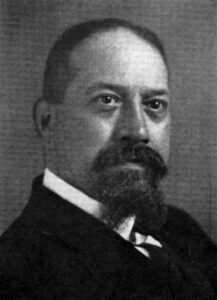 In late April 1919, anarchists, a group of people who believe that “society should have no government, laws, police, or any other authority. Most anarchists in the US advocate change through non-violent, non-criminal means. However, a small minority believed change could only be accomplished through violence and criminal acts” decided to take matters into their own hands. If you ask me, their actions proved without a doubt, why we need thinks like government (but not BIG government), laws, police, and other authority figures. In these bombings, radicals mailed over 30 booby trap dynamite-filled bombs to prominent politicians and appointees, including the Attorney General of the United States, as well as justice officials, newspaper editors, and businessmen, such as John D Rockefeller, and the mayor of Seattle, Washington. All but one of the bombs were addressed to high-level officials, but strangely, one bomb was notably addressed to the home of a Federal Bureau of Investigation field agent, Rayme Weston Finch, who had been tasked with investigating the Galleanists, and who in 1918 had arrested two prominent Galleanists while leading a police raid on the offices of their publication Cronaca Sovversiva. No one was killed in these bombings, but unfortunately, one senator’s maid lost her hands.
In late April 1919, anarchists, a group of people who believe that “society should have no government, laws, police, or any other authority. Most anarchists in the US advocate change through non-violent, non-criminal means. However, a small minority believed change could only be accomplished through violence and criminal acts” decided to take matters into their own hands. If you ask me, their actions proved without a doubt, why we need thinks like government (but not BIG government), laws, police, and other authority figures. In these bombings, radicals mailed over 30 booby trap dynamite-filled bombs to prominent politicians and appointees, including the Attorney General of the United States, as well as justice officials, newspaper editors, and businessmen, such as John D Rockefeller, and the mayor of Seattle, Washington. All but one of the bombs were addressed to high-level officials, but strangely, one bomb was notably addressed to the home of a Federal Bureau of Investigation field agent, Rayme Weston Finch, who had been tasked with investigating the Galleanists, and who in 1918 had arrested two prominent Galleanists while leading a police raid on the offices of their publication Cronaca Sovversiva. No one was killed in these bombings, but unfortunately, one senator’s maid lost her hands.
With the epic failure of the first bombings fresh in their minds, the anarchists decided to try again. On June 2, 1919, in seven US cities, all within approximately 90 minutes of each other, bombs once again rock the area. These bombs were much bigger. Explosions took place in some of the most significant urban areas in America, including New York, Boston, Pittsburgh, Cleveland, Washington DC, Philadelphia, and Patterson, New Jersey. It is believed that the bombers were most likely disciples of Luigi Galleani, an extremely radical anarchist who pushed for violence to rid the world of laws and capitalism. The bombs exploded on June 2 were much larger than those sent in April. They comprised up to 25 pounds of dynamite packaged with heavy metal slugs, which were designed to act as shrapnel. The bombs were sent to government officials who had endorsed anti-sedition laws and deportation of immigrants suspected of crimes or associated with illegal movements, as well as judges who had sentenced anarchists to prison.
One of the bombs was set off by a militant anarchist named Carlo Valdinoci, who was a former editor of the Galleanist publication Cronaca Sovversiva and close associate of Luigi Galleani. Sovversiva planted the bomb, but as he as he set it, it blew up the front of newly appointed Attorney General A Mitchell Palmer’s home in Washington, DC. Unfortunately for Sovversiva, the bomb exploded too early, and he was killed in the very blast he created. At the time, a young Franklin and Eleanor Roosevelt lived across the street and were also shaken by the blast. That bombing was just one in a series of coordinated attacks that day on judges, politicians, law enforcement officials, and others in eight cities nationwide.
Within minutes of the bombing of US Attorney General Palmer’s home, more were exploding in other cities, including Philadelphia, Pennsylvania. Here, two bombs exploded within seconds of each other under the porch of the rectory of the Our Lady of Victory Catholic Church, caving in the porch and shattering every window in the rectory and those in the basement. The church was still smoldering when another bomb exploded less than a mile away at the home of Philadelphia jeweler Louis Jajieky. That also seems like an unlikely target, given the political nature of most of the bombs. The interior of the Jajieky residence was utterly demolished, leaving only the exterior four walls standing. 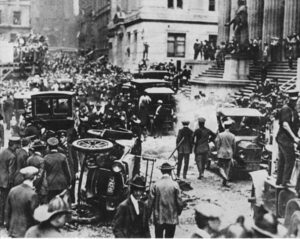
While the anarchists were persistent, they were not especially “good” anarchists. During these bombings and simultaneous explosions in six other cities, none of the men who were being targeted were killed, but one bomb took the life of New York City night watchman William Boehner. Each of the bombs was delivered with several copies of a pink flyer titled “Plain Words,” which read, “War, Class war, and you were the first to wage it under the cover of the powerful institutions you call order, in the darkness of your laws. There will have to be bloodshed; we will not dodge; there will have to be murder: we will kill because it is necessary; there will have to be destruction; we will destroy to rid the world of your tyrannical institutions.”
It was discovered that the flyer was printed in a printing shop operated by two anarchists, Andrea Salsedo, who was a typesetter, and Roberto Elia, who was a compositor. Bothe of them were known Galleanists. Rather that go to jail, Salsedo committed suicide. Elia was given the opportunity to testify about his role, and thereby avoid deportation, but he refused the offer. Unfortunately, the prosecutors could not obtain enough evidence to proceed with a criminal trial. Authorities continued to deport known Galleanists using the Anarchist Exclusion Act and related statutes.
The predecessor to the FBI, the federal investigation in Philadelphia, headed by Special Agent Todd Daniel and the Bureau of Investigation’s Acting Director, William Flynn had been investigating these anarchists. Days after the bombings, Special Agent Daniel said, “The terrorist movement is national in scope, and its headquarters may be located in this city [Philadelphia].” Daniel also noted the large number of “anarchists in this city and so many places used by them for meeting places.” Daniel’s first thought was that the perpetrators of the Philadelphia bombings were members of the Industrial Workers of the Word (a leftist union that embraced socialistic principles). On June 5, federal and local investigators were tracking down members of the “bomb-throwing squad,” which was said to have included women. They had 12 radicals suspected of having a hand in the city’s attacks under constant surveillance.
At the time of the bombings, there was already a lot of anxiety in America. The world was in the middle of a deadly wave of the pandemic flu, the Bolshevik Revolution in Russia, and the ensuing over-hyped “Red Scare,” and sometimes violent labor strikes across the country. The attacks it engendered angered Americans. People 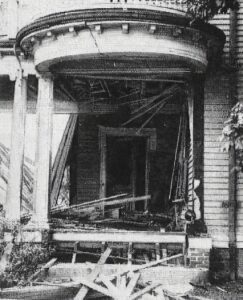 wanted answers and they wanted a severe response. The Attorney General, looking to make a bid for the presidency, didn’t want to stir up a revolution, so he was ready to oblige. He created a small division to gather intelligence on the radical threat and placed a young Justice Department lawyer named J Edgar Hoover in charge. Hoover collected and organized every intelligence gathered by the Bureau of Investigation (the FBI’s predecessor) and other agencies to identify anarchists most likely involved in violent activity. Even with all the “investigating,” the bombings were never officially pinned on anyone. They did arrest, under recently passed laws like the Sedition Act, suspected radicals and foreigners identified by Hoover’s group, including well-known leaders Emma Goldman and Alexander Berkman. With much public fanfare in December, several radicals were put on a ship, dubbed the “Red Ark” or “Soviet Ark” by the press, and deported to Russia. Basically, that ended all the repercussions over the 1919 Anarchist Bombings.
wanted answers and they wanted a severe response. The Attorney General, looking to make a bid for the presidency, didn’t want to stir up a revolution, so he was ready to oblige. He created a small division to gather intelligence on the radical threat and placed a young Justice Department lawyer named J Edgar Hoover in charge. Hoover collected and organized every intelligence gathered by the Bureau of Investigation (the FBI’s predecessor) and other agencies to identify anarchists most likely involved in violent activity. Even with all the “investigating,” the bombings were never officially pinned on anyone. They did arrest, under recently passed laws like the Sedition Act, suspected radicals and foreigners identified by Hoover’s group, including well-known leaders Emma Goldman and Alexander Berkman. With much public fanfare in December, several radicals were put on a ship, dubbed the “Red Ark” or “Soviet Ark” by the press, and deported to Russia. Basically, that ended all the repercussions over the 1919 Anarchist Bombings.
 A lighthouse is by definition, a tall building set on the coast with a light in its tower to warn ships of the presence of dangerous rocks or shores. I have long loved lighthouses…their history, the ships they protected, and the place you find them. These days, there might not be as much need for lighthouses, because of GPS, but GPS can fail, computers can crash, and some solar activity can affect GPS too. There are lots of reasons why it can fail, so these days, lighthouses might be considered a…backup plan. You never know when they might be needed, and that is not the time to find out that you don’t have them.
A lighthouse is by definition, a tall building set on the coast with a light in its tower to warn ships of the presence of dangerous rocks or shores. I have long loved lighthouses…their history, the ships they protected, and the place you find them. These days, there might not be as much need for lighthouses, because of GPS, but GPS can fail, computers can crash, and some solar activity can affect GPS too. There are lots of reasons why it can fail, so these days, lighthouses might be considered a…backup plan. You never know when they might be needed, and that is not the time to find out that you don’t have them.
The lighthouse at Sandy Hook, in what is now New Jersey, was put in use on June 11, 1764. It was needed badly, and the Provincial Congress of New York orchestrated two lotteries to raise money for its construction. As with many projects, things moved slowly. The lighthouse was first suggested for Sandy Hook nearly a century before, but it was finally initiated by Colonial Governor Edmund Andros. It finally became a priority 43 New York merchants, lost 20,000 pounds of sterling from shipwrecks in 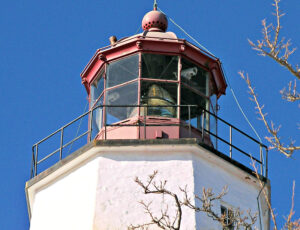 early 1761. Suddenly, it was really important. to protect those ships and their cargo. In the 27 months that the light house at Sandy hook stood, she had protected many ships.
early 1761. Suddenly, it was really important. to protect those ships and their cargo. In the 27 months that the light house at Sandy hook stood, she had protected many ships.
Then, on March 6, 1776, a committee of the New York Provincial Congress instructs Major William Malcolm to dismantle the Sandy Hook lighthouse. The territory was in dispute, and Major Malcolm’s task was to prevent the lighthouse from helping the British to reach New York City. The Congress wanted Malcolm to remove the lens and lamps so that the lighthouse could no longer warn ships of the rocky shore. Major Malcolm succeeded. Colonel George Taylor reported six days later that Malcolm had “given him eight copper lamps, two tackle falls and blocks, and three casks, and a part of a cast of oil from the dismantling of the beacon.” While the removal would most certainly mean the loss of ships and lives, it was deemed collateral damage, even if some of the ships were friendlies.
While the lighthouse removal was a success, it did not keep the British from invading New York. They were soon 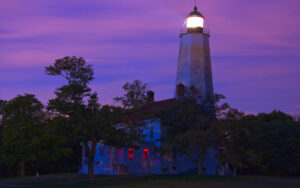 able to put the lighthouse back into service by installing lamps and reflectors. The Patriots attempted to knock the light out again on June 1, 1776, by placing cannon on boats and attempting to blow away the British equipment. They managed some damage before being chased away. The new states of New Jersey and New York bickered over ownership of the lighthouse, until the federal government assumed control of all US lighthouses in 1787. As of 1996, the Sandy Hook lighthouse, the oldest original lighthouse in the United States, passed into the jurisdiction of the National Park Service. I’m glad it survived all that turmoil. It would be sad if it was lost forever.
able to put the lighthouse back into service by installing lamps and reflectors. The Patriots attempted to knock the light out again on June 1, 1776, by placing cannon on boats and attempting to blow away the British equipment. They managed some damage before being chased away. The new states of New Jersey and New York bickered over ownership of the lighthouse, until the federal government assumed control of all US lighthouses in 1787. As of 1996, the Sandy Hook lighthouse, the oldest original lighthouse in the United States, passed into the jurisdiction of the National Park Service. I’m glad it survived all that turmoil. It would be sad if it was lost forever.

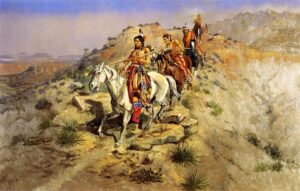 Knowing that a Native American trail called The Great Indian Warpath, also known as the Great Indian War and Trading Path, or the Seneca Trail, ran through the Great Appalachian Valley and the Appalachian Mountains, makes me wonder how many other major trails started out as or connect to smaller trails that had entirely different uses. The Great Indian Warpath was a network of ancient Indian routes with many branches. It crossed the Appalachian Trail in a number of places across several states, including New York, Pennsylvania, Maryland, West Virginia, Virginia, Tennessee, and Alabama. The Great Indian Warpath was a major north-south route of travel since prehistoric times. Parts of the trail are thought to have been used as many as 2,500 years ago when Indian traders from as far away as the Great Lakes, Rocky Mountains, and Mexico traveled parts of the trail. Various northeastern Indian tribes were known to have traded and made war along the trail, including the Catawba, numerous Algonquian tribes, the Cherokee, and the Iroquois Confederacy, even into more recent history, like the Old West.
Knowing that a Native American trail called The Great Indian Warpath, also known as the Great Indian War and Trading Path, or the Seneca Trail, ran through the Great Appalachian Valley and the Appalachian Mountains, makes me wonder how many other major trails started out as or connect to smaller trails that had entirely different uses. The Great Indian Warpath was a network of ancient Indian routes with many branches. It crossed the Appalachian Trail in a number of places across several states, including New York, Pennsylvania, Maryland, West Virginia, Virginia, Tennessee, and Alabama. The Great Indian Warpath was a major north-south route of travel since prehistoric times. Parts of the trail are thought to have been used as many as 2,500 years ago when Indian traders from as far away as the Great Lakes, Rocky Mountains, and Mexico traveled parts of the trail. Various northeastern Indian tribes were known to have traded and made war along the trail, including the Catawba, numerous Algonquian tribes, the Cherokee, and the Iroquois Confederacy, even into more recent history, like the Old West.
Eventually the Europeans and the White citizen of America began to use the Great Indian Warpath trail, which seems a little bit strange when you think about it. Nevertheless, Europeans, Hernando de Soto and his party used the trail when they crossed the Blue Ridge Mountains in 1540. Then, by the late 1600s, British colonists were using portions of the trail regularly, as they traded with the Indians. The British traders renamed the trail, or gave it a nickname anyway. Their name for the route was created by combining its name among the northeastern Algonquian tribes, “Mishimayagat” or “Great Trail,” with that of the Shawnee and Delaware, “Athawominee” or “Path where they go armed.” The combination translated to the Great Indian Warpath. Later, hunters and settlers traveled the trail to explore Kentucky and Tennessee, which led to the first mass western migration in American history, as settlers followed the Wilderness Road through the Cumberland Gap.
As time went on, the people left the trail at different places to go to find their dreams. Those new trails took on new names, such as the Seneca Trail, the Great Valley Road, Kanawha Trail, Wilderness Road, Catawba Trail, Unicoi Trail, and the Georgia Road. As I think about the well-known trail in the area, the Appalachian Trail, and the number of people who travel that trail every year, it makes me wonder if they have ever noticed the trails 
 that cross it or split off of it. I have hiked along many trails over the years, and I have seen the many trails that have crossed them. Now I wonder what pioneers might have taken those trails on their journeys to wherever it was that they were headed. It’s unlikely that I will ever know the true stores, but it is nice to think about it anyway.
that cross it or split off of it. I have hiked along many trails over the years, and I have seen the many trails that have crossed them. Now I wonder what pioneers might have taken those trails on their journeys to wherever it was that they were headed. It’s unlikely that I will ever know the true stores, but it is nice to think about it anyway.
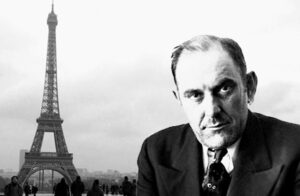 You’ve heard of con artists selling things like the London Bridge or some ocean front property in Arizona. Well, Victor Lustig was one of the best con artists ever. Lustig was born in Hostinné, Bohemia, Austria-Hungary on January 4, 1890. He was a smart young man, who learned new things easily, but that could be said to have also contributed to his. When a student doesn’t have to spend a lot of time studying, they can become bored and look for entertainment outside of their studies. When Lustig was 19, while taking a break from his studies in Paris, Lustig took to gambling and womanizing, It was during this time he received a defining scar on the left side of his face from the jealous boyfriend of a woman was having an affair with. When he left school, Lustig decided that he could make his best living, using his quick wit and ability to size up of a situation, as well as his fluency in several languages to embark on a life of crime. Like all criminals, the idea of easy money, along with a big helping of excitement, drew Lustig in. He focused on a variety of scams and cons that provided him with property and money, and before long he was a professional con man.
You’ve heard of con artists selling things like the London Bridge or some ocean front property in Arizona. Well, Victor Lustig was one of the best con artists ever. Lustig was born in Hostinné, Bohemia, Austria-Hungary on January 4, 1890. He was a smart young man, who learned new things easily, but that could be said to have also contributed to his. When a student doesn’t have to spend a lot of time studying, they can become bored and look for entertainment outside of their studies. When Lustig was 19, while taking a break from his studies in Paris, Lustig took to gambling and womanizing, It was during this time he received a defining scar on the left side of his face from the jealous boyfriend of a woman was having an affair with. When he left school, Lustig decided that he could make his best living, using his quick wit and ability to size up of a situation, as well as his fluency in several languages to embark on a life of crime. Like all criminals, the idea of easy money, along with a big helping of excitement, drew Lustig in. He focused on a variety of scams and cons that provided him with property and money, and before long he was a professional con man.
Lustig decided that he might like to try traveling along with his scams, and many of his initial cons were committed on ocean liners sailing between the Atlantic ports of France and New York City. He deduced that rich travelers didn’t need their money as badly as he did, so they became a prime target. One of his favorite schemes was one in which he posed as a musical producer who sought investment in a non-existent Broadway production. The scheme worked well in that the victim wouldn’t expect an immediate return on the investment, and by the time they realized that it had been a con, Lustig was long gone. Lustig’s travel schemes came to an end when trips on trans-Atlantic liners were suspended in the wake of World War I, Lustig had to find a new territory in which to run his schemes. So, Lustig opted for a trip to the United States. It seemed like the best option, because he was becoming a little too well known amongst various law enforcement agencies for the scams he committed, including one he conducted in 1922 in which he conned a bank into giving him money for a portion of bonds he was offering for a repossessed property, only to use sleight of hand to escape with both the money and the bonds.
By 1925, Lustig had traveled back to France. While reading the local newspaper in Paris, he came across an article discussing the problems faced with maintaining the Eiffel Tower. Instantly, he knew that he has his next con. At the time, the monument had begun to fall into disrepair, and the city was finding it increasingly expensive to maintain and repaint it. Incredibly, the article speculated that the public opinion might be to simply remove it. It was this part of the article that really inspired Lustig to use the Eiffel Tower as part of his next con. He quickly researched the information he would need to make his scam believable and set to work  preparing the scam, which included hiring a forger to produce fake government stationery for him.
preparing the scam, which included hiring a forger to produce fake government stationery for him.
The scam was carried out on a small group of scrap metal dealers, who were invited to a confidential meeting at an expensive hotel. Lustig identified himself to them as the Deputy Director-General of the Ministère de Postes et Télégraphes (Ministry of Posts and Telegraphs). During the meeting, Lustig convinced the men that the upkeep of the Eiffel Tower was becoming too much for Paris and that the French government wished to sell it for scrap, but that because such a deal would be controversial and likely spark public outcry, nothing could be disclosed until all the details were thought out. Lustig Told the men that he had been charged with the task of selecting the dealer who would receive ownership of the structure. The men were told that they had “made the final cut” of possible contract winners, because of their reputations as “honest businessmen” and that he was going to make a final selection after the meeting. His speech included genuine insight about the monument’s place in the city and how it did not fit in with the city’s other great monuments like the Gothic cathedrals or the Arc de Triomphe. The men were convinced that Lustig was legitimate.
Because of his long history of reading people, Lustig knew how a perfect mark would look and act, and before long, he had his choice…André Poisson, who was an insecure man who wished to rise up amongst the inner circles of the Parisian business community. As Poisson showed the keenest interest in purchasing the monument, Lustig decided to focus on him once the dealers sent their bids to him. He then arranged a private meeting with Poisson, at which Lustig convinced him that he was a corrupt official, claiming that his government position did not give him a generous salary for the lifestyle he wished to enjoy. Poisson became concerned that he would not win the bid, so he agreed to pay a large bribe to secure ownership of the Eiffel Tower. His lust for the position of “top businessman” would be his downfall. Once Lustig received his bribe and the funds for the monument’s “sale” (around 70,000 francs, which is about $78,757), he soon fled to Austria. Lustig correctly suspected that when Poisson found out he had been conned, he would be too ashamed and embarrassed to inform the French police of what he had been caught up in. Still, he bided his time, checking the newspapers just to be sure. When his suspicions proved correct…when he could find no reference of his con within their pages, he returned to Paris later that year to pull off the same scheme one more time. The second attempt didn’t go over so well. Someone informed the police about the scam and Lustig had no choice but to flee to United States to evade arrest. Lustig is widely regarded as one of the most notorious con artists of his time, and he is infamous for being “the man who sold the Eiffel Tower twice.”
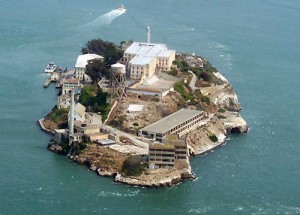
Lustig was finally arrested on May 10, 1935, in New York. He was charged with counterfeiting. He managed to escape from the Federal House of Detention in New York City by faking illness and using a specially made rope to climb out of the building on the day before his trial, but he was recaptured 27 days later in Pittsburgh. Lustig pleaded guilty at his trial and was sentenced to fifteen years in prison on Alcatraz Island, California for his original charge, with a further five years for his prison escape. On March 9, 1947, Lustig contracted pneumonia and died two days later at the Medical Center for Federal Prisoners in Springfield, Missouri. On his death certificate his occupation was listed as apprentice salesman…and I guess he was at that.
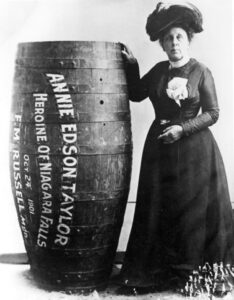
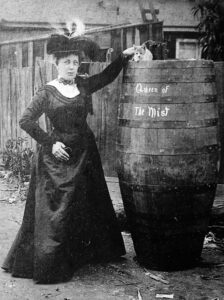 People have always been risk takers…always looking for that next thrill. Many people think that the biggest risk takers are the guys, but that is not always the case. On October 24, 1901, as a birthday gift to herself on her 63rd birthday, Anna “Annie” Edson Taylor, who was an American schoolteacher, became the first person to survive a trip over Niagara Falls in a barrel. Annie wasn’t just out to make a name for herself, but rather her motives were purely financial. Somehow, she thought this “claim to fame” would make her rich, but she never made much money from her adventure.
People have always been risk takers…always looking for that next thrill. Many people think that the biggest risk takers are the guys, but that is not always the case. On October 24, 1901, as a birthday gift to herself on her 63rd birthday, Anna “Annie” Edson Taylor, who was an American schoolteacher, became the first person to survive a trip over Niagara Falls in a barrel. Annie wasn’t just out to make a name for herself, but rather her motives were purely financial. Somehow, she thought this “claim to fame” would make her rich, but she never made much money from her adventure.
Annie was born on October 24, 1838, in Auburn, New York. She was one of eight children born to Merrick Edson and Lucretia Waring. Her father owned a flour mill and died when she was 12 years old, leaving enough money to provide a comfortable living for the family. Annie took a four-year training course, graduating with honors, and became a schoolteacher. While at college, she met David Taylor. They were married and had a son who died in infancy. Sadly, her husband died soon after. During her working years, the widowed Taylor, was often between jobs and locales.
Eventually, she moved to Bay City, Michigan, planning to become a dance instructor, except that there were no dance schools in Bay City at that time. No problem…Taylor opened her own. She moved to Sault Saint Marie in 1900 to teach music. From there, she traveled to San Antonio, Texas. Then she and a friend went to Mexico City to find work, but that venture completely failed, so she returned to Bay City. All of her moving and a number of other bad choices caused Taylor to find herself in hard times, Then, her house burned down, as well as a poor investment with a clergyman left her pretty broke. She claimed to be only 42 years old at the time and said that she could make money more easily if she were younger. Because she had always associated money and class with success, Taylor believed that she needed money to hold her place in the world. So, in the 1900 Federal Census, she declared her year of birth as 1860. She thought that if she was thought to be younger, she could make money easier.
Then, in what was most likely her craziest scheme ever, and hoping to secure her later years financially, Taylor decided she would be the first person to ride over Niagara Falls in a barrel. It seems that her money-making schemes were in endless supply. Taylor used a custom-made barrel constructed of oak and iron and padded with a mattress to make for her crazy trip. The barrel launch was delayed several times, mainly because no one wanted to be part of potential suicide. Finally, she decided she would have to do this on her own. First, two days before her own attempt, Taylor sent a domestic cat over the Horseshoe Falls in her barrel to test its strength to see if the barrel would break or not. Contrary to rumors at the time, the cat survived the plunge and seventeen minutes later, after she was found with a bleeding head, posed with Taylor in photographs. Then, on her 63rd birthday, the barrel was put over the side of a rowboat, and Taylor climbed in, carrying with her, her lucky heart-shaped pillow. The lid was screwed down, and friends used a bicycle tire pump to compress the air in the barrel. They plugged the hole used for the air with a cork, and Taylor was set adrift near the American shore, south of Goat Island.
The barrel was carried by river currents over the Canadian Horseshoe Falls, which has since been the site for all successful daredevil stunting at Niagara Falls. Shortly after her plunge, rescuers reached her barrel. Taylor was discovered to be alive and relatively uninjured, having received just a small gash on her head. The daring trip took less than twenty minutes, but it was some time before the barrel was actually opened. Taylor was helped out of the barrel by Carlisle Graham, her friend and the first man to run the rapids on a raft. After the journey, Taylor told the press, “If it was with my dying breath, I would caution anyone against attempting the feat … I would sooner walk up to the mouth of a cannon, knowing it was going to blow me to pieces than make another trip over the Fall.” Finally, she spoke some sense!! 
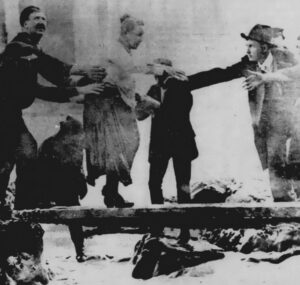
On February 23, 1921, Taylor was taken to the Niagara County Infirmary in Lockport, New York. Still lying about her age, she claimed to be 57. She died on April 29, 1921, aged 82 and was interred next to her friend and fellow daredevil Carlisle Graham, in the “Stunter’s Rest” section of Oakwood Cemetery in Niagara Falls, New York. Since she died penniless, public donations were collected to pay the costs of her funeral, which was held on May 5, 1921. She blamed her bad health and near blindness to her trip over the falls, twenty years earlier.
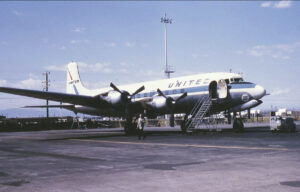 While flight remains one of the safest forms of travel, there is always the possibility of a malfunction that can have devastating effects. In the case of United Airlines Flight 624, a Douglas DC-6 airliner, registration NC37506, was a scheduled passenger flight from San Diego, California to New York City. Very likely, these passengers had taken this exact same flight a number of times, and possibly on this exact same plane. Nevertheless, this flight was about to be very different…and that difference was going to have devastating effects on the plane and on the outcome of this flight.
While flight remains one of the safest forms of travel, there is always the possibility of a malfunction that can have devastating effects. In the case of United Airlines Flight 624, a Douglas DC-6 airliner, registration NC37506, was a scheduled passenger flight from San Diego, California to New York City. Very likely, these passengers had taken this exact same flight a number of times, and possibly on this exact same plane. Nevertheless, this flight was about to be very different…and that difference was going to have devastating effects on the plane and on the outcome of this flight.
Flight 624 took off from Lindbergh Field, in what appeared to be a normal flight. The flight made its first scheduled stop at Los Angeles Airport, followed by a normal scheduled stop at Chicago Municipal Airport. Everything was normal for both stops. In fact, the  whole flight proceeded normally until they began their descent into New York’s LaGuardia Airport. They began their descent over Pennsylvania, and suddenly, they had a warning alarm telling them of a fire in the cargo hold. The crew responded to what was later determined to be a false signal of a fire in the front cargo hold by releasing CO2. Proper operating procedure called for opening the cabin pressure relief valves prior to discharging the CO2 bottles, to allow for venting of the CO2 gas buildup in the cabin and cockpit. There was no evidence found of the crew opening the relief valves. Either they forgot or it malfunctioned (which didn’t appear to be the case). As a result, the released CO2 gas seeped back into the cockpit from the front cargo hold and apparently
whole flight proceeded normally until they began their descent into New York’s LaGuardia Airport. They began their descent over Pennsylvania, and suddenly, they had a warning alarm telling them of a fire in the cargo hold. The crew responded to what was later determined to be a false signal of a fire in the front cargo hold by releasing CO2. Proper operating procedure called for opening the cabin pressure relief valves prior to discharging the CO2 bottles, to allow for venting of the CO2 gas buildup in the cabin and cockpit. There was no evidence found of the crew opening the relief valves. Either they forgot or it malfunctioned (which didn’t appear to be the case). As a result, the released CO2 gas seeped back into the cockpit from the front cargo hold and apparently 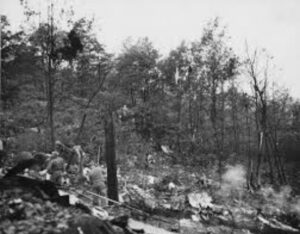 partially incapacitated the flight crew. It would be like being in a closed-up garage and leaving your car running. The decision-making process of the crew became compromised. As things got worse, the crew put the aircraft into an emergency descent, miscalculating their altitude, and as the plane descended lower than it should have, it hit a high-voltage power line and burst into flames. The plane then smashed through the trees of a wooded hillside about five miles from Mount Carmel, Pennsylvania, a small town 135 miles from Philadelphia, at 1:41pm EDT on June 17, 1948. When the four-engined, propeller-driven airplane crashed, it resulted in the deaths of all four crew members and 39 passengers on board.
partially incapacitated the flight crew. It would be like being in a closed-up garage and leaving your car running. The decision-making process of the crew became compromised. As things got worse, the crew put the aircraft into an emergency descent, miscalculating their altitude, and as the plane descended lower than it should have, it hit a high-voltage power line and burst into flames. The plane then smashed through the trees of a wooded hillside about five miles from Mount Carmel, Pennsylvania, a small town 135 miles from Philadelphia, at 1:41pm EDT on June 17, 1948. When the four-engined, propeller-driven airplane crashed, it resulted in the deaths of all four crew members and 39 passengers on board.
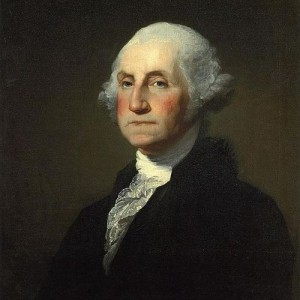
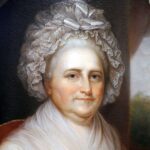 These days, when a president or other elected official is inaugurated, the ceremony is often followed that evening by an inaugural ball. In fact, it is pretty much expected, like the celebration of victory after a long, hard-fought battle. When our first president, George Washington was sworn into office as the first president of the United States, on the balcony of Federal Hall in New York City, New York, on April 30, 1789, all tradition concerning elections was brand new. Our country was still trying to figure out what our traditions would be at that point.
These days, when a president or other elected official is inaugurated, the ceremony is often followed that evening by an inaugural ball. In fact, it is pretty much expected, like the celebration of victory after a long, hard-fought battle. When our first president, George Washington was sworn into office as the first president of the United States, on the balcony of Federal Hall in New York City, New York, on April 30, 1789, all tradition concerning elections was brand new. Our country was still trying to figure out what our traditions would be at that point.
A week later, on May 3, 1789, George Washington attended a ball in his honor. These days inaugural balls are planned and held with every inauguration. In fact, most presidents attend several balls on inauguration night. Still, in 1789, they were brand new, and it would be another decade before the practice was revived, with the inaugural of James Madison, the fourth president. Dolley, President Madison’s wife, threw a gala for 400 people at Long’s Hotel in Washington. Tickets cost $4.00, which would have amounted to about $100.00 today. That was actually very reasonable, considering that they run about $350.00 today. I suppose that if you were part of high society, you would think nothing of that amount for a ball which would show your support of the new president, as well as, your position in society.
Since Madison’s inaugural ball, the events have become more or less a quadrennial presidential fixture. Today, we think nothing of the event, assuming that it is just part of the grand tradition of our electoral process and seating a new president. Nevertheless, there have been years that the Inaugural Ball has been cancelled. Woodrow Wilson, in 1913, and Warren Harding, in 1921, both passed up balls, citing the need to economize. Franklin Pierce canceled his in 1853 because of the recent death of his son. President Franklin D Roosevelt was another exception, choosing to work through the night rather than attend his first inaugural ball in 1933. He canceled the next three galas because of the Depression and World War II. 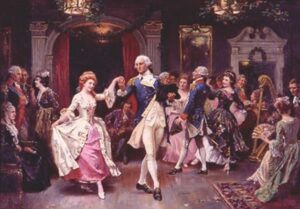
At the first ball, Washington danced with many ladies who were considered the cream of New York society. New York was the temporary site of the newly established federal government. Eliza Hamilton, wife of Alexander Hamilton, the treasury secretary, recorded her impressions in her memoirs. She wrote that Washington liked to dance the minuet, a dance she thought was “suited to his dignity and gravity.” In what would seem strange today, Martha Washington apparently did not attend the Inaugural Ball. One month to the day of her husband’s departure for New York, Martha Washington set out on her own triumphant trip to the seat of the new government, thereby becoming our first, First Lady.

 My grandniece, Siara Kirk has had a wonderful year. Prior to this year, Siara had gone through some things that were very hard, and then she met her future husband, Chris Kirk and her whole life started to turn around. The year 2021 ended very well beginning in early September, with Siara walking boldly up to Chris in the local Loaf and Jug convenience store in Casper and telling him that she liked his freckles. That was the beginning of a beautiful relationship. They found that they had a lot in common, including a love of exercise and travel. They especially love couple’s exercise, and the stuff they do is amazing. Their love blossomed, and on March 20, 2022, Chris proposed, and Siara accepted.
My grandniece, Siara Kirk has had a wonderful year. Prior to this year, Siara had gone through some things that were very hard, and then she met her future husband, Chris Kirk and her whole life started to turn around. The year 2021 ended very well beginning in early September, with Siara walking boldly up to Chris in the local Loaf and Jug convenience store in Casper and telling him that she liked his freckles. That was the beginning of a beautiful relationship. They found that they had a lot in common, including a love of exercise and travel. They especially love couple’s exercise, and the stuff they do is amazing. Their love blossomed, and on March 20, 2022, Chris proposed, and Siara accepted.
Siara has always been into exercise, and for over seven years, it has been her dream to become a certified personal trainer. With lots of hard work and perseverance, that dream came true on April 19, 2022, and she 
 couldn’t be happier about that. Siara has always set goals for herself…a bucket list, if you will. She has been slowly (or maybe not so slowly) checking things off of her list. Siara has worked at Platte Valley Bank since July of 2015, so I assume the Personal Trainer work will be done as a side hustle…or as I prefer, side gig. Still in the world of personal trainers, I suppose side hustle might be more fitting.
couldn’t be happier about that. Siara has always set goals for herself…a bucket list, if you will. She has been slowly (or maybe not so slowly) checking things off of her list. Siara has worked at Platte Valley Bank since July of 2015, so I assume the Personal Trainer work will be done as a side hustle…or as I prefer, side gig. Still in the world of personal trainers, I suppose side hustle might be more fitting.
It has always been Siara’s goal to be married to a man who treats her like her dad treats her mom. That goal came true on July 23, 2022, that dream came true. Chris treats her like the princess she is, and they are perfect for each other. Another one of Siara’s longtime goals, has always been to travel to New York. California was on that list too, but she and Chris took that trip two summers ago, and now the plan is to take the much-anticipated trip to New York this coming June. They are both so excited and are busy making plans as to what all they will see. I’m sure it will be just as many things as they can pack into their time there. It’s good to be taking these trips while they are 
 still a couple, because Siara and Chris both want to have kids someday in the not-too-distant future, and I know they will be amazing parents.
still a couple, because Siara and Chris both want to have kids someday in the not-too-distant future, and I know they will be amazing parents.
Siara and Chris enjoy taking joint trips with her parents, Chantel and Dave Balcerzak too. They have gone several times to see the 80s Hairbands, and that has become rather a tradition. They also went on September 17, 2022, to watch a Wyoming Cowboys game. They are all fans of the Pokes, as are most Wyomingites, so going to a game is always great fun. This year was such a great year for Siara, and I’m sure the future will be wonderful too. I can’t wait to see what “Bucket List” items she checks off next. Today is Siara’s birthday!! Happy birthday Siara!! Have a great day!! We love you!!

 No disease, especially those that are highly contagious, and for which there is no known cure, is easy to find out that one has, and for those who might have been around the victim of said disease, it can be very frightening. Mary Mallon, who was born September 23, 1869, Cookstown, County Tyrone, Northern Ireland, immigrated to the United States in 1883. Possessing minimal skills, she made her living as a domestic servant, most often as a cook. At some point, she became a carrier of the typhoid bacterium (Salmonella typhi), although no one really knows exactly when or how that happened. Nevertheless, between 1900 and 1907, nearly two dozen people fell ill with typhoid fever in households in New York City and Long Island where Mallon worked. That was the first clue that she was a carrier, because the illnesses often occurred shortly after she began working in each household, then by the time the disease was traced to its source in a household where she had recently been employed, Mallon had already moved on, with no forwarding address. The whole dilemma made it very hard to really track down the carrier, and she knew nothing about it, because she wasn’t ill. It is unusual to be asymptomatic, but not impossible, and Typhoid Mary was one of the unusual ones.
No disease, especially those that are highly contagious, and for which there is no known cure, is easy to find out that one has, and for those who might have been around the victim of said disease, it can be very frightening. Mary Mallon, who was born September 23, 1869, Cookstown, County Tyrone, Northern Ireland, immigrated to the United States in 1883. Possessing minimal skills, she made her living as a domestic servant, most often as a cook. At some point, she became a carrier of the typhoid bacterium (Salmonella typhi), although no one really knows exactly when or how that happened. Nevertheless, between 1900 and 1907, nearly two dozen people fell ill with typhoid fever in households in New York City and Long Island where Mallon worked. That was the first clue that she was a carrier, because the illnesses often occurred shortly after she began working in each household, then by the time the disease was traced to its source in a household where she had recently been employed, Mallon had already moved on, with no forwarding address. The whole dilemma made it very hard to really track down the carrier, and she knew nothing about it, because she wasn’t ill. It is unusual to be asymptomatic, but not impossible, and Typhoid Mary was one of the unusual ones.
Finally, in 1906, after 6 people in a household of 11 where Mallon had worked in Oyster Bay, New York, became sick with typhoid, the home’s owners hired New York City Department of Health sanitary engineer George Soper to investigate the outbreak. Soper’s specialty was studying typhoid fever epidemics, so he was just the man for the job. Of course, Soper was not the only investigator looking for the carrier of the dreaded typhoid disease. Typhoid can usually be cured these days using medications like Ciprofloxacin and Ceftriaxone, but in those days, it meant a death sentence for many people. As the investigation continued, it was concluded that the outbreak had likely been caused by contaminated water. Mallon continued to work as a cook, moving from household to household until 1907. Finally in the right place at the right time, Mallon was located working in a Park Avenue home in Manhattan. The winter of that year, following an outbreak in the Manhattan household that involved a death from the disease, Soper met with Mallon. Following extensive tests, he linked all 22 cases of typhoid fever that had been recorded in New York City and the Long Island area to her. It was this connection that earner her the “unwanted” nickname of Typhoid Mary.
A scared Mallon fled the area, but authorities led by Soper finally overtook her and had her committed to an isolation center on North Brother Island, which is a part of the Bronx, New York. There she stayed, despite an appeal to the US Supreme Court. She was finally released in 1910, when the health department released her on condition that she never again accept employment that involved the handling of food. These days she might have been able to go back to work as a cook, but at that time they couldn’t successfully test for the presence of the bacteria in a person, and with the very real possibility of passing the contagion through food, it was a risk they couldn’t take.
Unfortunately for Mallon, an epidemic four years later, brought her once again into the spotlight. The epidemic 
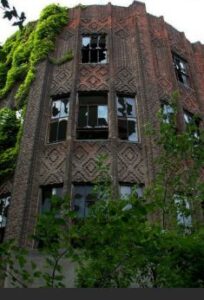 was at a sanatorium in Newfoundland, New Jersey, and at Sloane Maternity Hospital in Manhattan. Mallon had worked as a cook at both places. Mallon was at last found in a suburban home in Westchester County, New York, and was returned to North Brother Island, where she remained for the rest of her life. In 1932, she suffered a paralytic stroke that led to her slow death six years later.
was at a sanatorium in Newfoundland, New Jersey, and at Sloane Maternity Hospital in Manhattan. Mallon had worked as a cook at both places. Mallon was at last found in a suburban home in Westchester County, New York, and was returned to North Brother Island, where she remained for the rest of her life. In 1932, she suffered a paralytic stroke that led to her slow death six years later.
Mallon claimed to have been born in the United States, but it was later determined that she was an immigrant. Although she herself was immune to the typhoid bacillus, 51 original cases of typhoid and three deaths were directly attributed to Typhoid Mary. There were also countless more that were indirectly attributed to her as people she infected, passed the illness to people they came in contact with.

